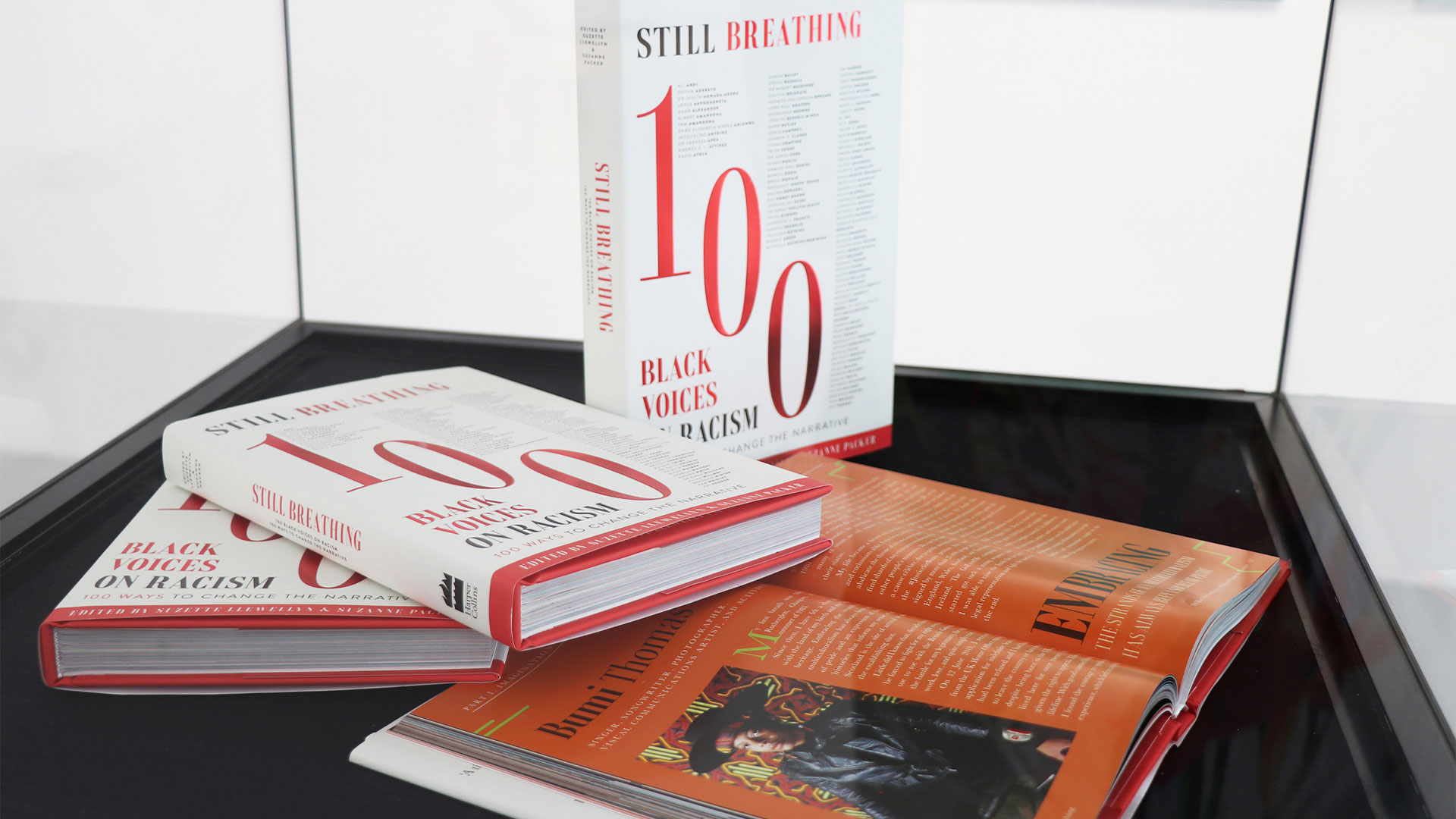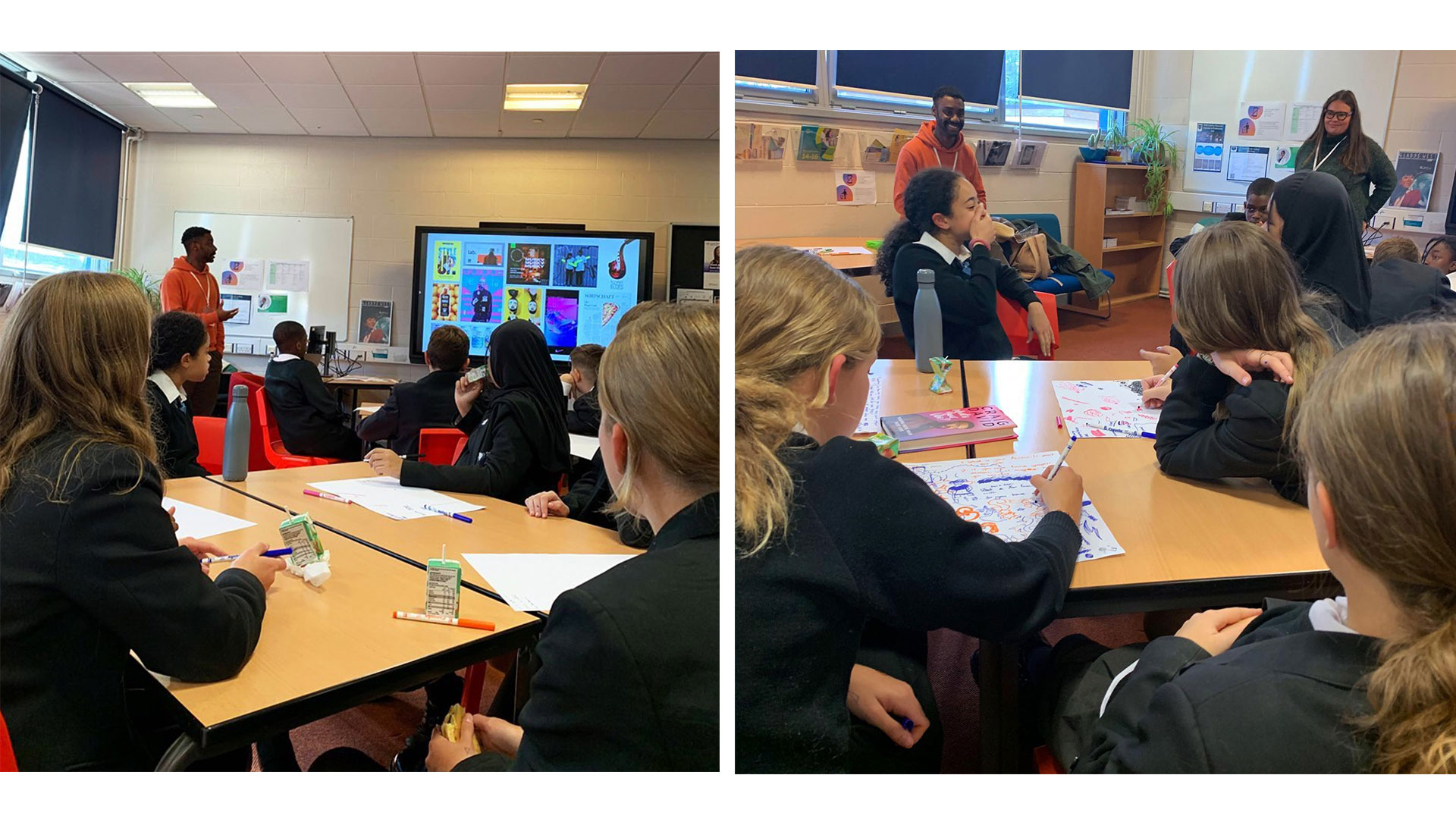
Kieron Lewis is a freelance graphic designer who specialises in editorial design. In the early days of his career, he found himself frustrated by the lack of opportunities within book and magazine design. "You needed to know people in the industry to have a starting point, but I didn't have that fortune," he says. "So, I decided to work on self-directed publications with friends, and self-funding the work."
Those personal projects eventually paid off, and a decade later he counts numerous publishers including Penguin Books, Harper Collins and Laurence King among his client list. He's also a D&AD Judge and an Adobe Live host, and a guest lecturer for various universities. As part of our Day in the life series, I caught up with him to find out more...

Tell me about a typical day in your role
Well, I’m up pretty early most mornings. The joys of being a new dad!
Once I’ve had breakfast with the family, I aim to be at my studio space at A Small Studio, by no later than 8:30am. For any parents reading this, having structure is sometimes ‘wishful’ thinking, but I do my best to follow this structure.
I live my life by calendars, so once I’m at my desk with a strong Spotify playlist (always with headphones on), I’ll create my to-do list. Nine times out of 10, I’m working with InDesign. Creating publications now takes up the majority of my time as a freelancer – and I bloody love it!

Which project are you the most proud of and why?
I have two projects, I hope that's not cheeky!
My very first project as a freelancer was with the publisher Harper Collins. I designed a 300+ hardback publication titled Still Breathing: 100 Black Voices on Racism, 100 Ways to Change the Narrative. The book focuses on 100 Black voices from across the British community. Everyone featured has voiced their lived experiences to help us set up a true conversation about racism in Britain.
The second project is another hardback book launched a few months back with publisher Chronicle Books, The New Brownies’ Book: A Love Letter to Black Families. This publication is based on the work of W. E. B. Du Bois. In January 1920, the civil rights activist and sociologist published The Brownies' Book: A Monthly Magazine for Children of the Sun. This included art, stories, letters, and activities to inspire children, share Black history, and celebrate their identities. As the first periodical for African-American youth, this was an important work in the history of children's literature. A century later comes the updated version of the beloved magazine. The New Brownies' Book revives its mission to inspire the young readers of today.
I am incredibly proud to have the opportunity to work on projects that empower the Black community and encourage readers to have open discussions on uncomfortable issues that many people face within the realms of race.

Tell me about a tricky work-related challenge and how you approached it
Something that comes to mind is when I do public speaking. Whether it's speaking to students at a university level or secondary school, it can be tricky to keep the audience engaged. Especially if it's an hour-long talk. When I prepare my talks, I’m always conscious of filtering down my content to the real essential parts.
Growing up (more so in my school days), I would ‘waffle’ a lot. I like to chat…that's not a secret! Over time and with the help of more experienced speakers, I’ve learned to become clearer with how I deliver my talks. For a younger audience (schools), I always try to get them involved by playing a game. Something interactive, something that gets them thinking and speaking with their fellow students. This usually goes down well (90% of the time).

What do you enjoy about being a lecturer?
Being able to speak to students and be completely transparent about my journey. I remember my time at university, we were fortunate to have a lot of established creatives who came, shared work and discussed their career. However, I always found that it was always so positive. Surely, things went wrong, right? In my talks, I show final deliverables of course, but I also share the challenges of timelines, awkward conversations, and other elements that decide whether a project sinks or swims.
I love a good curveball and I always invite students at the end of my talks in the Q&A to throw them at me.

What was your early career like?
Since graduation, I’ve had the opportunity to work with numerous designers and directors across various spaces within the creative industry. Some good times, some bad times. I’ve worked in advertisement, which definitely wasn’t for me and I’ve dabbled in digital design, which was fascinating but again, it wasn’t for me.
Designing magazines and books was something I was keen to do from the early days, but it was very difficult to find opportunities. I attended many events to put myself in situations where creatives within the editorial sector might be, and I shared my portfolio with a copious amount of editorial directors.
To be completely transparent, I was so annoyed with the industry, and also myself, about the small amount of available opportunities. You needed to know people in the industry to have a starting point, but I didn't have that fortune. So, I decided to work on self-directed publications with friends, and self-funding the work.
Years later, this snowballed into having opportunities to share our publications on blogs and even speak at schools, colleges and universities across the UK.

Talk me through your process for designing a book
Before any design work commences, I need to take a step back and think about the storytelling of the publication. Pen to Moleskine book. What is the message we want readers to get from it? How can the editorial design reinforce the message in an accessible way?
Afterwards, l do some visual research which isn’t solely restricted to online. I like to go to exhibitions as they make me think outside the box. Also, I have access to a lot of design publications, both at home and in my studio. Basically, I merge myself with visual inspiration.
I’ll then draw out some rough sketches and use this as a reference to start designing on InDesign. When working on a publication, I tend to switch between three programs: Photoshop, Illustrator and InDesign.

Tell me about the work you do for Adobe
During the pandemic, I received a nice surprise email from Adobe. I was invited to be a guest on their show, Adobe Live. This is a show where designers across the different disciplines work on a project of their choice and design live, whilst being hosted across Adobe’s YouTube & Behance channels.
Since completing my own Adobe Live session, I've been invited by Adobe to be a regular host on their channel. Fast forward three years later, and the collaboration is still going strong!
This opportunity to host has allowed me to meet some amazing creatives from various parts of the world and have a deeper understanding of their work process. You can re-watch all the streams I’ve hosted here.
Last year, I also had the opportunity to travel to Munich and host some of the Adobe team, to present exclusive features that were streamed soon after the Adobe MAX conference in Los Angeles.
Since my first contact with Adobe until now, this has been one of those collaborations that has organically grown over time. I’ve met fantastic members of the team, both in Europe and the US. Everyone is very down to earth and humble. I can’t stress how important these qualities are, especially within our exceedingly competitive industry. So I’m very grateful for this regular opportunity.

How did you become a D&AD judge?
I was approached by D&AD in 2021 to be on the Writing for Design Jury and what an experience it was! I guess it is a thing when you’re at university, but I always wanted to be a D&AD judge. Having the opportunity to see amazing work up close and have open discussions with talented creatives was the dream…and it happened!
When I get asked about how platforms and brands approach me, I always think back to what I was like in the early stages of my career. I was so determined and almost impulsive, in terms of wanting opportunities to happen quickly. It was only when I took a step back, focused more on my craft and upskilling for myself, more than for others, that eventually folks started taking notice and reaching out.

How inclusive is the design industry in 2024?
Well, I’d say it is definitely getting better, but there is always more work to be done. The industry still feels and looks in a certain way, especially regarding class and race, and this needs to change.
What can creatives do to help improve this?
I’ve got a lot of friends in the design industry who have set up their own initiatives, which then allow them to work with people from different backgrounds. These initiatives are the ones that people who are in a position of power need to support and help where possible. This could be by just giving them a voice, or by facilitating networks. However, financial backing would always be the most impactful way of helping…we’ve all got to eat!

What do you do when you get stuck for ideas?
I have a few things… First of all, step away from the computer. Headphones, my Moleskine book and a decaf flat white in a quiet spot usually help.
Secondly, speak to someone (usually my wife) who has no affiliation with the project. That way she can share her thoughts and ideas from a completely unbiased perspective. Also when it is someone close to you, they’re not afraid to be savage when it is necessary. I appreciate that!

Who's your dream client?
As I love designing hardback publications, it would have to be a publisher of some sort. I have too many names to list, but in terms of what we produce, I really want to produce a cookbook. Working with food photography would be the dream. I always have ideas for editorial spreads…yes, I’m that keen!
I believe the opportunity will come one day. As long as I’m proactive within my space, humble and honest, I believe a moment will come.

What are you working on at the moment?
Currently I’m juggling a few exciting publications and the one that stands out the most is with the Victoria & Albert Museum (V&A). This is my first ever project with the Museum and I am very determined to produce my best work to date.
The book is titled The Music Is Black: A British Story and is the publication for the opening exhibition of the V&A East Museum in 2025. This landmark exhibition celebrates 125 years of Black music-making in Britain, and it will reveal how Black British music has shaped British culture. Spanning four continents and 12 decades, this is a story of excellence and struggle, resilience and joy. A project such as this aligns exactly with my work values, which is to produce work that celebrates and empowers the Black community. More info will be released in the coming months ahead (the trailer is below).
What career advice would you give your younger self?
Give yourself time to grow. Don’t force situations to occur, as you’ll only become more frustrated. Keep on focusing on projects you enjoy (usual self-directed side hustles) and try to visit more creative events, even outside of the country. The creative industry is bigger than just London town!
You can find out more about Kieron via his website.







